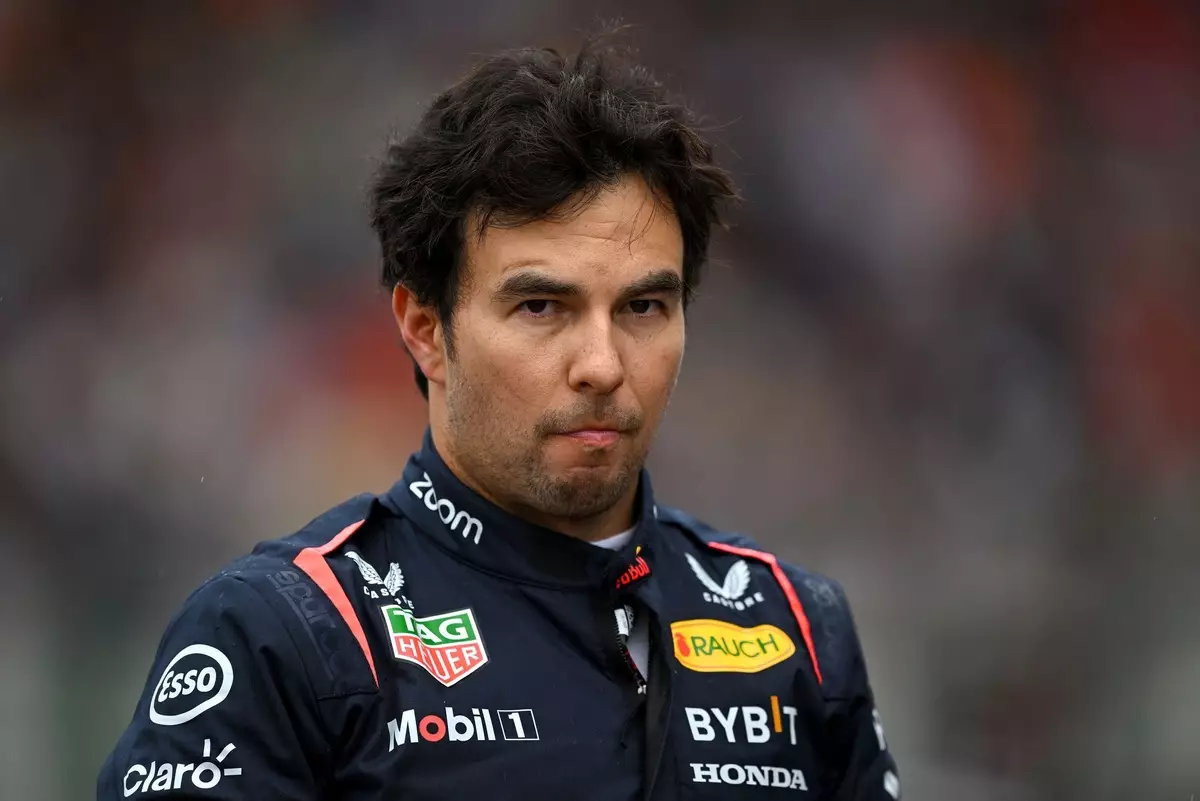Formula 1 is a realm characterized by high stakes and even higher expectations. At the very pinnacle of this fierce competition is Red Bull Racing, a team synonymous with dominance and performance. However, when it comes to the human element behind the wheel, the pressure can morph into a suffocating force, as demonstrated by Sergio Perez’s recent revelations about his tumultuous experience with the team. Through his candid reflections, it becomes evident that the pursuit of excellence in F1 is not just a matter of engineering prowess and driving skill, but also one where psychological dynamics play a crucial role.
Recent interviews have highlighted an uncomfortable narrative; Perez has indicated that Red Bull not only failed to shield him from the pressures of performance but actively contributed to a toxic environment within his team. This complex mix of public scrutiny and internal rivalry creates the kind of stress that can erode even the most formidable drivers. The implications of management decisions, as articulated by Perez, suggest that a lack of communication and support from the team exacerbated his struggles on the grid.
The Deterioration of Team Dynamics
Interestingly, the elements that contribute to a successful team in F1 encompass more than just raw talent and technical expertise—they also revolve around robust interpersonal relationships and team morale. In their quest for continual improvements and podium placements, Red Bull appeared to overlook the detrimental effects of creating a culture centered on pressure and criticism. Perez’s assertion that Red Bull failed to protect him, even following the assurances of a contractual extension, underscores a severe disconnect between management expectations and driver welfare.
Sergio’s experience provides a glimpse into the often unseen emotional turmoil drivers face. The public may perceive these athletes as invincible machines fueled by adrenaline, but, as Perez’s comments reveal, they are inherently human, prone to the burdens of expectations and the consequences of failures. His reflections suggest that without the assurance of support from the higher echelons of the team, drivers can become easy scapegoats for larger structural failings.
The Red Bull Dilemma: New Drivers, Stagnant Performance
The fallout from Perez’s departure raises critical questions about Red Bull’s strategy for nurturing talent. Following his exit, the team has cycled through multiple drivers, including Liam Lawson and Yuki Tsunoda, neither of whom has managed to deliver results commensurate with what was once expected. The stark contrast between Perez, who stood as a crucial asset during his tenure, and his successors reflects not only on driver selection but also highlights the potential pitfalls of neglecting the building blocks of team dynamics.
Helmut Marko’s comments, attributing the team’s struggles to Perez’s performance rather than systemic issues, serve to illustrate a broader trend in elite sports management: the tendency to pinpoint individual failures rather than addressing the collaborative shortcomings that could undermine a team’s success. The complexities of F1 dynamics necessitate a reevaluation of performance metrics—not just for drivers, but for the collective effort that propels a team forward.
A Shift in Development Philosophy
At the heart of Perez’s concerns was a fundamental change that he noted took place with the departure of key figure Adrian Newey. The role of a visionary designer in F1 cannot be overstated, as their innovative approach often reflects in car performance and overall team strategy. The evolution of Red Bull’s design ethos following Newey’s exit has been met with mixed reviews; the assertion that they could no longer compete with giants like Mercedes points towards a broader systemic issue rather than the mere capabilities of individual drivers.
The brief period of Red Bull’s performance decline post-Newey emphasizes the importance of maintaining not only technological superiority but also the necessity for a stable and nurturing environment conducive to developing talent. In Formula 1, a driver’s fate is closely intertwined with their team; in Perez’s case, a lack of stability could mean the difference between standing on the podium and packing a suitcase on the sidelines.
Ultimately, the saga of Sergio Perez and Red Bull Racing serves as a poignant reminder of the nuanced relationship between achieving success and maintaining positive team morale. As the sport continues to evolve, teams must recognize that nurturing human potential is just as critical as technical innovation. It is a lesson that could define the future trajectory of not only Red Bull but the entire landscape of Formula 1 racing.

